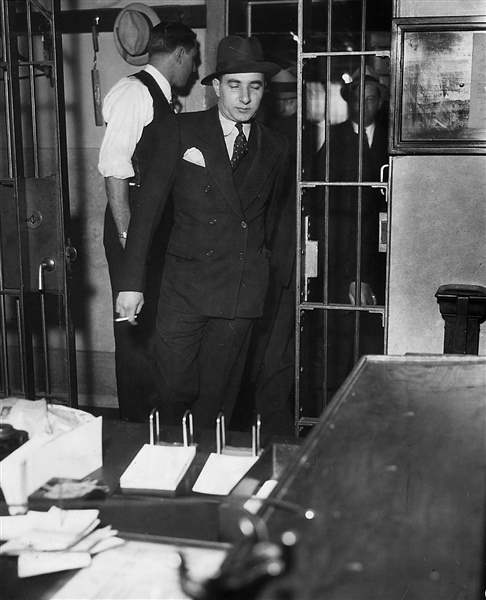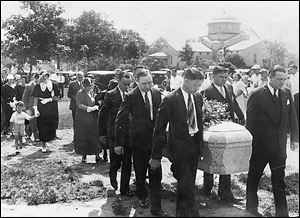
Violent gang activity is nothing new for Toledo
Today’s groups share similarities with mobsters of Prohibition era
4/28/2013
Yonnie Licavoli was implicated in the killing of Toledo bootlegger Jack Kennedy and later sent to prison. The Licavoli gang wasn't afraid to kill to get its way or prove a point.
TOLEDO NEWS-BEE

Yonnie Licavoli was implicated in the killing of Toledo bootlegger Jack Kennedy and later sent to prison. The Licavoli gang wasn't afraid to kill to get its way or prove a point.
The guns fired, the slang used, even the motives may be different, but the gangs of today in Toledo in many ways hark back to to the gangs of old.
While many gangs in Toledo now claim affiliation with larger gangs such as the Bloods or the Crips, it’s not like they are dues-paying members of an organized syndicate. The affiliation is mostly nominal. Gangs instead are born out of neighborhood groups.
Local author Ken Dickson said Toledo has always had gangs. For a long time, they were small groups, formed along neighborhoods and ethnic lines, much as they are now.
“If you were Italian you couldn't join a Polish gang. If you were Polish you couldn’t join an Italian,” he said. "And if you were Jewish, you couldn't join either one."
The gangs operated in a city rife with black-market activity. Booze during Prohibition, gambling houses, prostitution, all operated side by side with gangs and fed the culture. Even street gangs need capital.
There was violence in the past, but those neighborhood gangs weren’t particularly vicious or ambitious. Instead, it was about watching the back of your own, Mr. Dickson said.
Those gangs also shared their wealth in the neighborhood, maybe for altruistic reasons, maybe to secure favors.

Jack Kennedy, a Toledo bootlegger, was laid to rest in 1932 after being gunned down in the city.
That changed with Yonnie Licavoli in the early 1930s, Mr. Dickson said. While the Licavoli gang mostly stayed Italian — they also had Jewish members — they weren't neighborhood protectors or bound by ethnicity. Instead, they were out to corner illicit markets and muscle out competition.
“They were not for the neighborhoods,” Mr. Dickson said. "They were out for themselves."
The Licavolis weren’t afraid to kill to get their way or prove a point, possibly best illustrated with the murder of Irish bootlegger Jack Kennedy. After the Licavolis, gangs were more tied to particular black markets rather than neighborhoods or ethnic groups.
In some ways, modern street gangs merge elements of both eras. While they break along ethnic and neighborhood lines, they aren’t built for neighborhood protection. And while they are financed on illicit trade, today it's drugs, instead of booze and gambling.
Violence is different now, too.
It's less Montague and Capulet, Hatfield and McCoy today. While many homicides in Toledo involve gang members, there’s rarely a larger struggle over market or territory control involved. It’s mostly petty disputes that escalate quickly. Gang violence generally just means gang members committing violence, not gang-related violence.
Less turf, more beef.
But maybe the biggest difference between gangs then and now is the impunity organized crime once operated with within Toledo and other American cities. Now, individual gang members don't live for years in the public eye, known in households throughout the city for their criminal exploits.
It helped then that organized crime, and the markets it controlled, had fingers in much of the city's establishment — be it business, government, labor, or media. It helps to have friends.